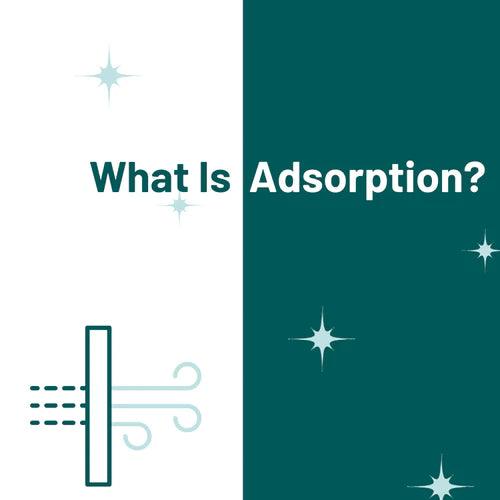Introduction
Physical adsorption is a process that occurs when the molecules of a substance adsorb on the surface of an adsorbent. The air purifier can remove organic chemical pollutants in the air by absorbing organic molecules in the air through adsorption materials. The adsorbed molecules are fixed on the surface by weak van der Waals interaction rather than covalent bond. Adsorbents are usually porous materials, such as activated carbon, silica gel and zeolite, with high specific surface area to maximize the contact between air and the adsorbent.
Principle
Adsorption refers to the adhesion of atoms, ions or molecules in gas, liquid or dissolved solution to the solid surface.
Adsorption is different from absorption because there is no mass transfer between surfaces: the adsorbed molecules will not be transferred to the bulk phase, but only remain on the top of the bulk phase as adsorbates.
The adsorbed molecules are fixed on the surface by weak van der Waals interactions rather than covalent bonds.
When the molecule is adsorbed, it remains on the surface due to the weak van der Waals interaction. These interactions include dispersion force, dipole dipole force and hydrogen bond. There is no covalent bond between molecule and surface; This is why adsorption is different from absorption.
adsorbent
Adsorbents can be divided into two categories: active and passive. Active adsorbents are those that use a chemical reaction to adsorb gas or liquid molecules, while passive adsorbents rely on a physical process.
It is important to note that active/passive refers to the mechanism of adsorption rather than the rate at which it occurs; both types of materials have intrinsic characteristics that determine how quickly they will absorb gasses or liquids.
Characteristics of physical adsorption
In physical adsorption, the molecules or atoms of the adsorbate (the material that is adsorbed) are attracted to and bind with the surface of an adsorbent (the material that adsorbs). This attraction is called the van der Waals force. When two materials are in contact with each other, they form a bond through weak interactions between their molecules. These forces can be explained by quantum mechanics.
The first step in physical adsorption is for one molecule from your sample to come into contact with an atom on your surface. Then it sticks there and another molecule from your sample comes along and sticks next to it—this process continues until all available sites on your surface have been filled. The amount of time it takes for this process depends on how much space there still available for more molecules to fit onto your surface—if there isn't much space left then it'll take longer for them all get attached; if there's still plenty of room left then things will happen faster because more bonds can be made per unit time
Physical adsorption air purifier
Adsorption purification is a physical process, not a chemical reaction. The adsorption material removes pollutants in the air, thereby purifying the air. In this way, the adsorption process can be used to remove specific types of compounds from the air.
Conclusion
In a word, adsorption is the process of adsorbing substances on the surface. It is an important technology in many different scientific and technological fields. It is used to purify the air and is currently a safe and reliable technology for indoor air purification.











Leave a comment
All comments are moderated before being published.
This site is protected by hCaptcha and the hCaptcha Privacy Policy and Terms of Service apply.